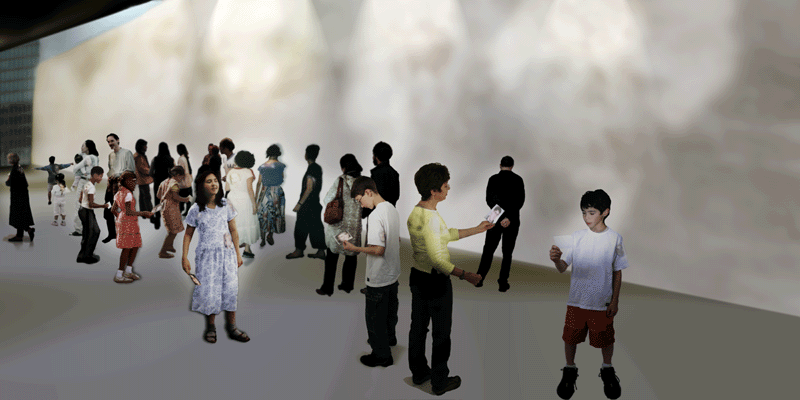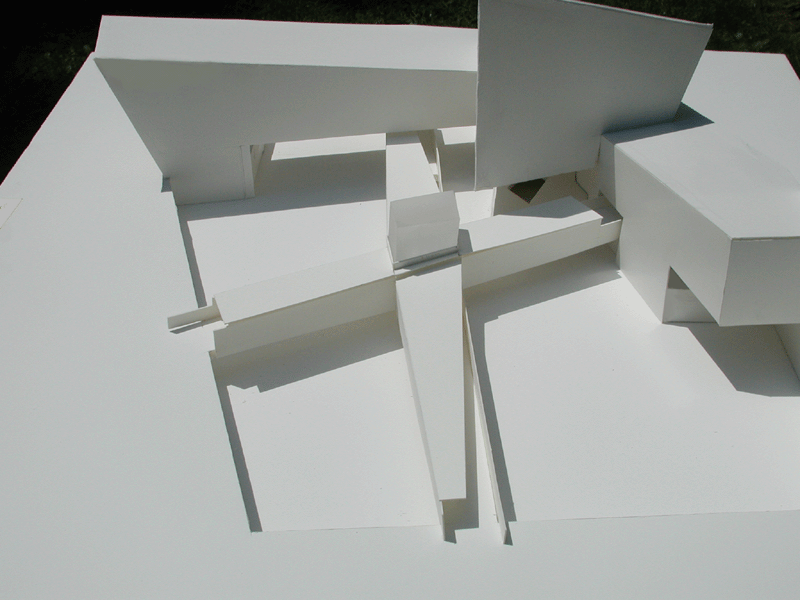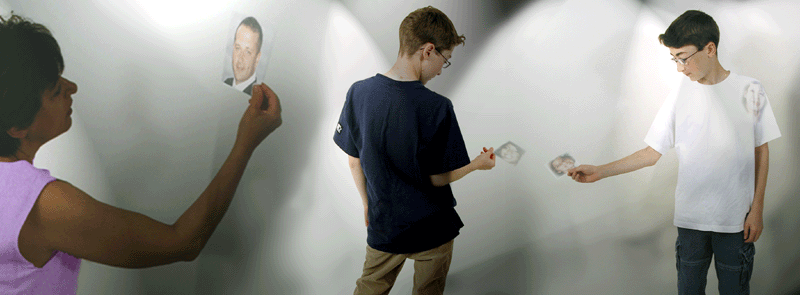
NEWICK ARCHITECTSProjects
| Projects | Profile | Planning | Consulting | Project History | Installations | News | Contact | Home |
|
The World Trade Center Memorial Competition New York City 5201 Entrants with Linda Lindroth Cynthia Beth Rubin, Imaging Consultant |
 |
| Visitors Capture projected images of Victims |
"Her mother watched her twirl and skip her white card, catching faces like butterflies in a garden. She was alone in this space today and while it was still a source of sadness, their child found her way through the beams of light, catching souls. Standing, she held out her card. It didn't matter whose face appeared. The apparition was familiar, a member of an extended family. Some were in motion, others frozen in smiles- ageless-lost, but found again and again by strangers and friends. "A big box of smiles," her fatherless daughter called to her. "It's just like a big box of smiles." |
|
Two bridges cross the garden site like shafts laid horizontally across the excavation. One is the Memorial Pavilion; the other, the contemplative space with the Remembrance Wall. The two originate at September 11th Place and stretch across the void left by the destruction of the WTC towers. At their intersection, a third vertical shaft extends from the bottom of the excavation through the roof and terminates in a private space for families. The Memorial Pavilion Our memorial design takes its inspiration from one of the earliest responses to the tragedy of 9/11. An outpouring of images on street corners, train stations, post offices and storefronts held meaning for everybody, not just the families who searched for lost loved ones. Everyone was affected by the posted photographic images and their collective power manifested our communal loss. The Remembrance Wall The 3x5 Capture Card may be taken home or the visitor may write a prayer or message on it and place it in a slot in the wall volume. Inserted into the Remembrance Wall, engraved with the names of the dead, each prayer, each message is for all who died. Similar to making tracings at the Vietnam Memorial, the card serves as temporary visit with loved ones; remembering them in the space they last inhabited. How many times have we stopped to watch a speck of dust dance in a sunbeam? Light is the key element in this memorial. The attack took place in broad daylight in the crystalline early morning light of a beautiful late summer day in the city. The sky was clear blue. Imagine 3016 beams of light each projecting the face of someone lost to us. The dense light of these projected beams simulate that cloud photographed atop the World Trade Center Towers as well as the swirl of dust that the wind carried across the razed surface as each name was read in 2002. A space filled with a fog-like shimmering light. The projected light fills the space and daylight leaks into the space though gaps in the pavilion's skin. Private Space for Families The private space for families is a parallelogram shaped room open to the sky. It has translucent glass walls and at one end is an inverted cube of glass providing cover. The room occupies the top of the shaft that projects from the intersection of the memorial below. A marble bench runs along one side. The walls of the room are sloped in such a way that people in the room can only see the walls and the sky above. No other buildings are visible. Structure and Egress At the level of the bottom of the excavation, a long, semi-continuous
two-foot wide marble bench marks the perimeters of the two destroyed buildings.
People will sit along the edge and gaze across the 212-foot lawn inscribed
by the bench. The bench is lit fiber-optically, so it glows at night. |
 |
 |
| From the Southwest |
 |
| The Capture Cards |